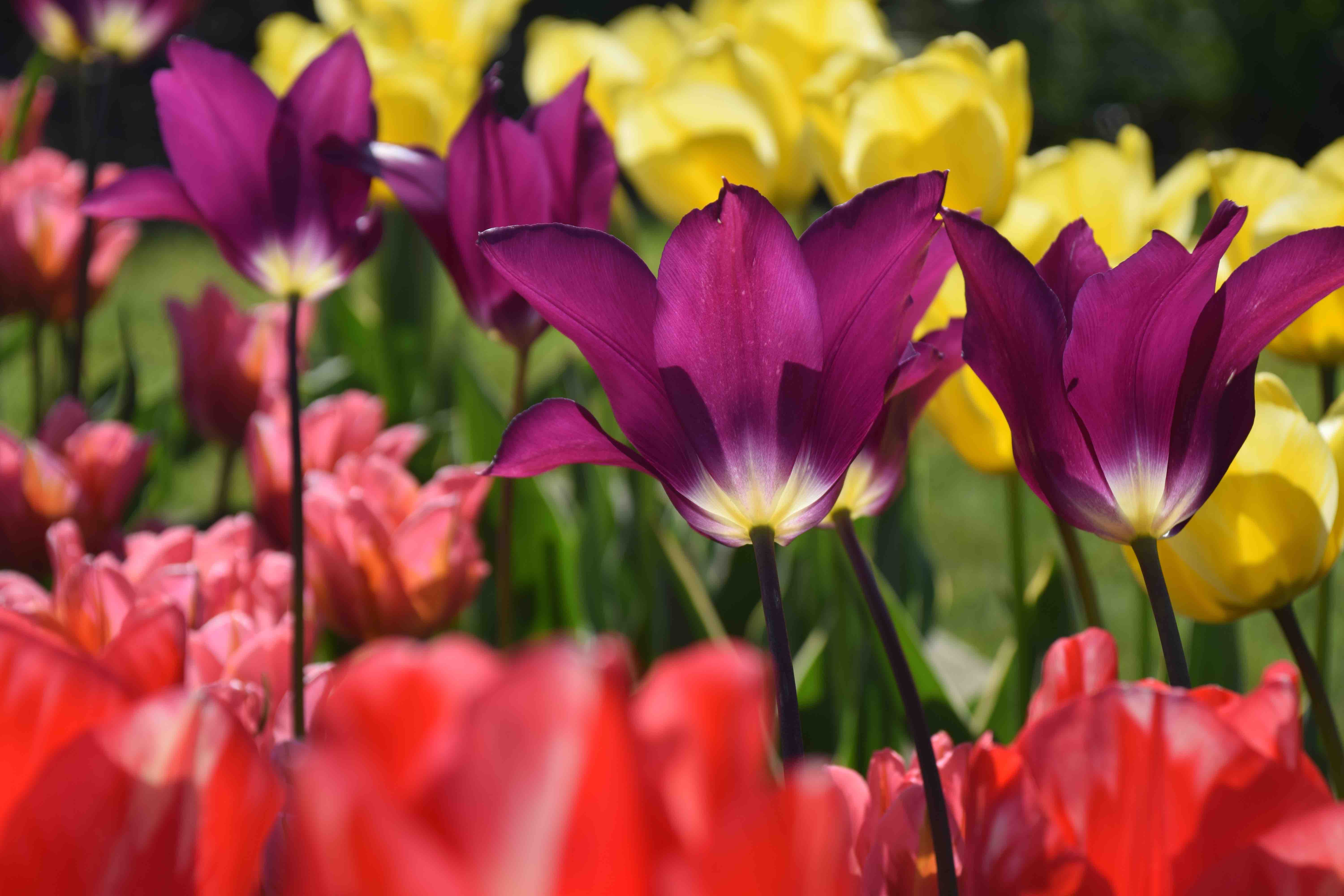
There are so many different spring bulbs it can be difficult to know which to choose. In the past two weeks I have discussed daffodils, which are the best for British gardens because they cope well with our variable and often wet winters. They should be perennial, and get better every year.
Tulips are a different matter and they vary a lot. Some (especially the early double kinds) are not easy to keep from year to year. Others, including most lily-flowered kinds and the Darwin Hybrids, which flower at the end of the tulip season, have a good chance of lasting for several years in the garden, left undisturbed.
Tulips prefer a sunny site and well-drained soil and they are best if they are lifted and replanted every year. This is because the bulb you plant will disappear and be replaced by several new bulbs each year. These small bulbs will get crowded and not bloom if left in the soil – just producing leaves. If they are lifted and separated you will usually find a larger bulb that will bloom and many smaller bulbs that may need to be grown on for a year to reach flowering size. See the photo below. The photo above is of my planting of all the small bulbs in a bed to grow on and you can see that lots of them (but not all) also flowered.
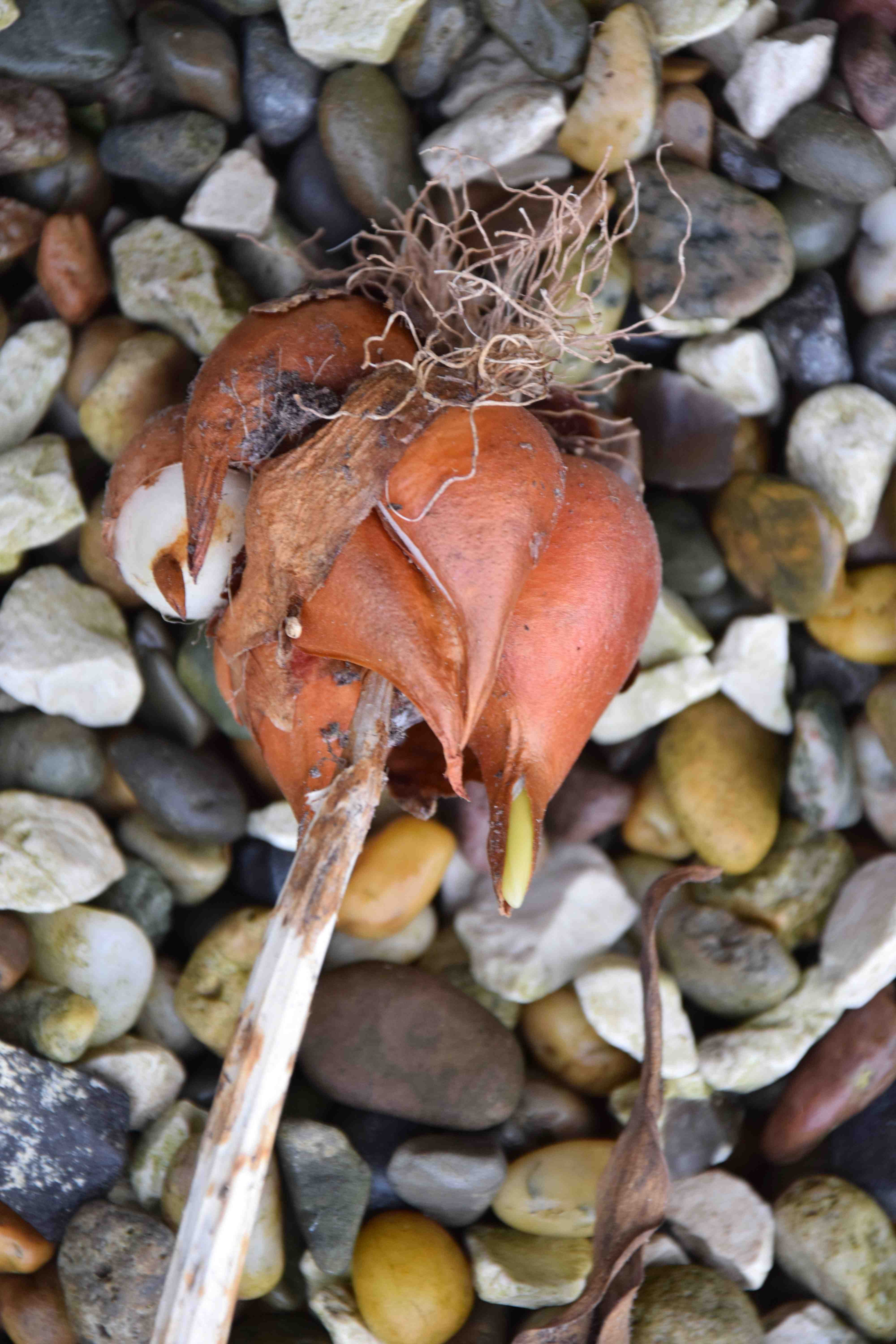
There are fewer good quality tulip bulbs around this year because of the poor spring weather in The Netherlands. Prices may be higher than usual which is a good reason to look after our tulips. I tend to plant my new tulips in pots where I can really appreciate them. I then take them out in June and plant the biggest bulbs in the garden, or in pots again, and I plant the small bulbs in a raised bed to grow on. You may not want to bother with this but tulips are great for patio pots and are worth the trouble and expense.
When growing in pots you can use a multipurpose compost but I prefer to use one that ‘contains John Innes’ or I mix half and half multipurpose and John Innes No 3.
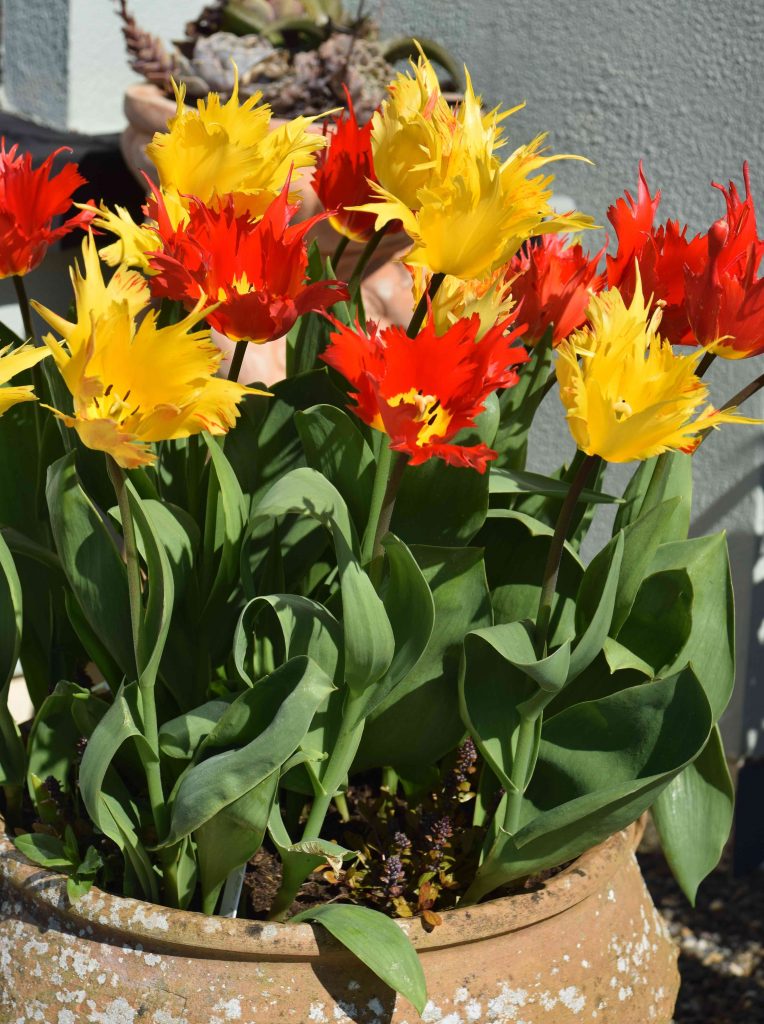
Some tulips have variegated leaves and these are exceptional value. They look attractive as soon as the leaves appear. Once tulips pop through the soil they change almost daily. The flowers also change as they mature, from thin buds to flouncy blooms. That is part of their charm.
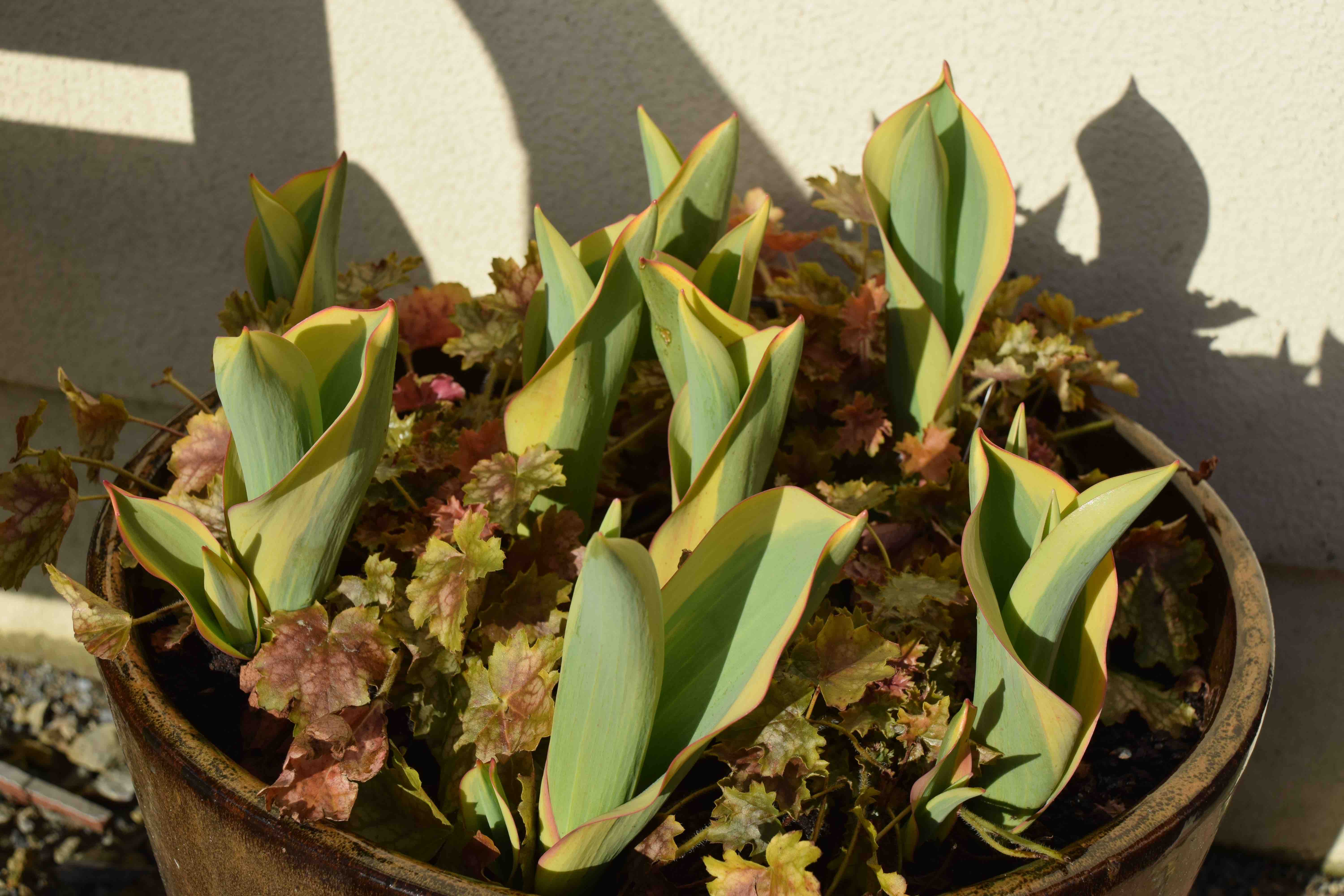
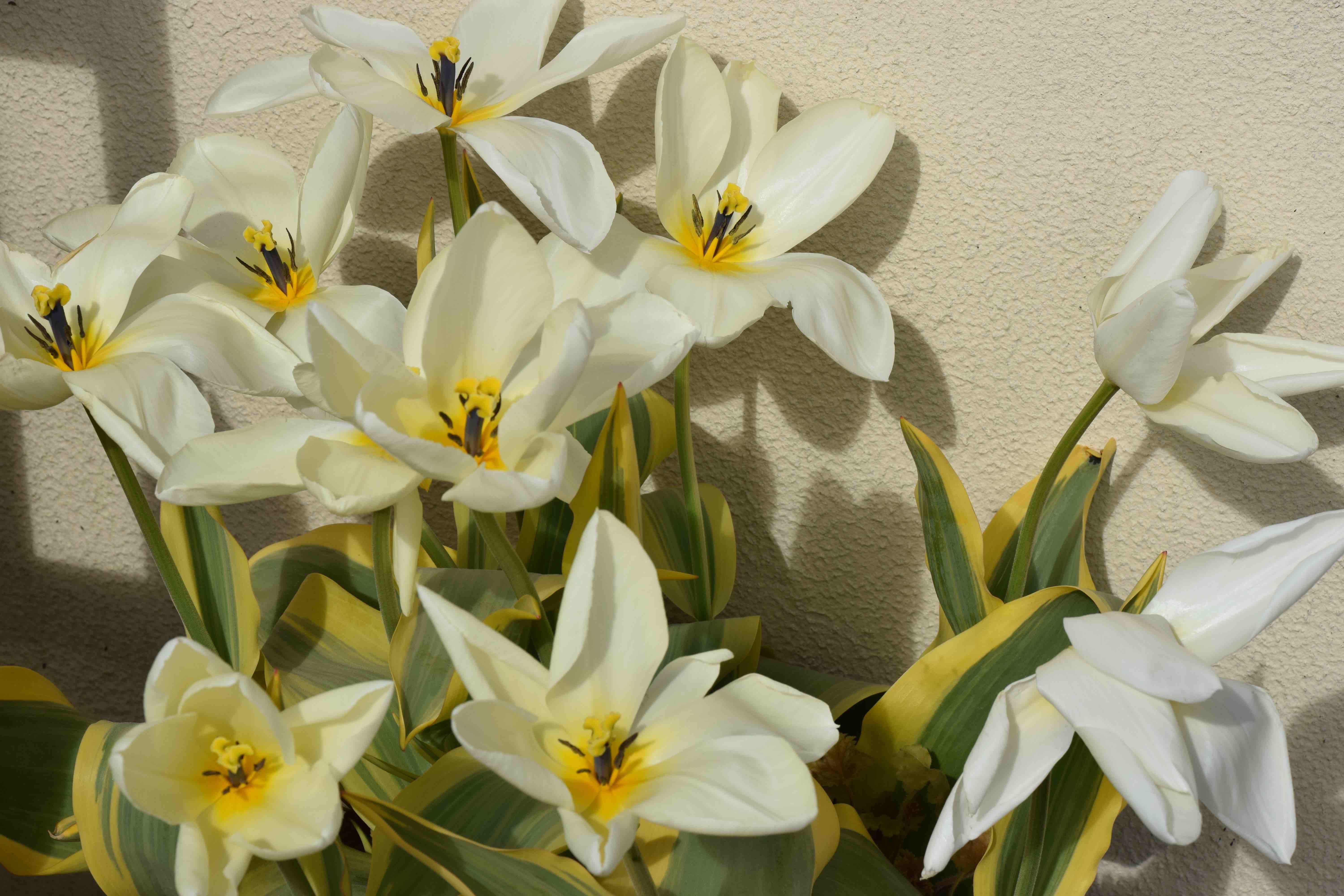
Tulips have a more formal look than daffodils and are traditionally used in bedding, especially with wallflowers. You can also underplant them with forget-me-nots, polyanthus and violas.
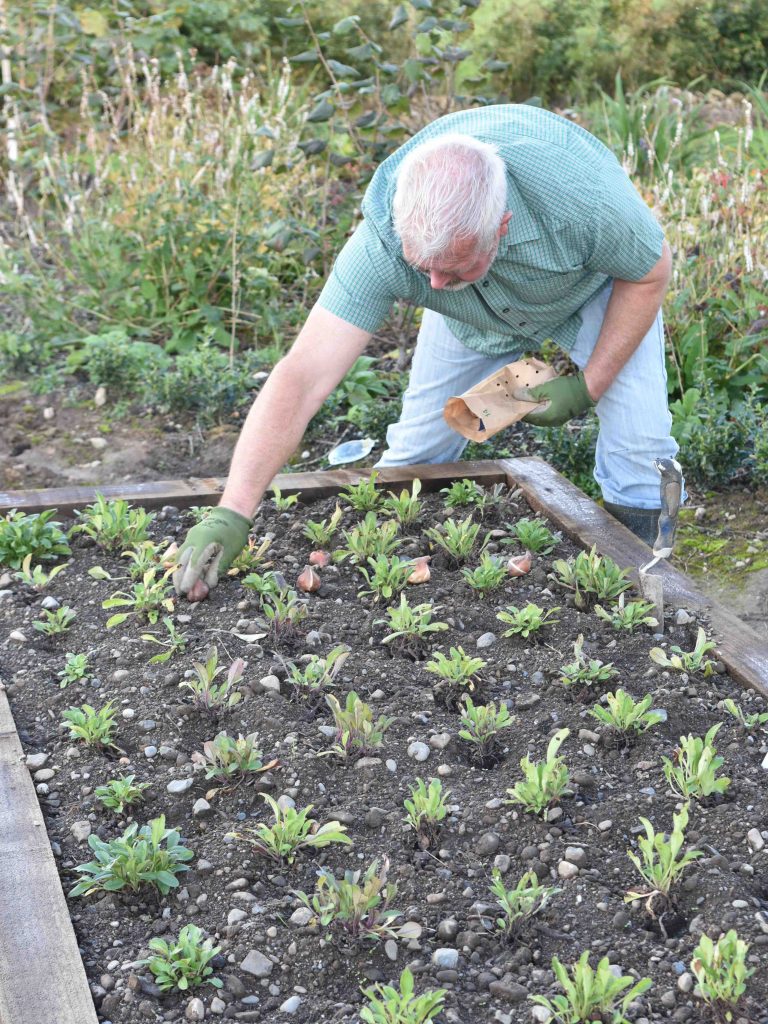
Always plant the bedding plants first and then plant the tulips so you don’t accidentally damage the bulbs when planting.
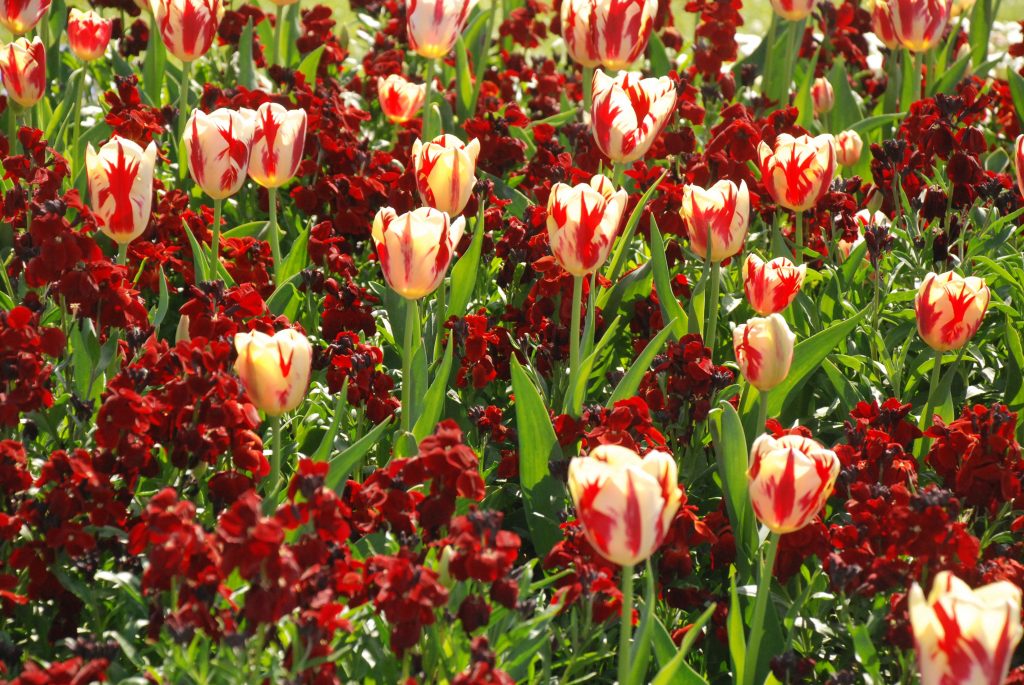
I like all tulips but am especially fond of lily-flowered tulips and viridiflora tulips, which have green stripes on the petals. Lily-flowered tulips are elegant and their flowers age from slim buds to starry blooms. ‘Ballerina’ is common and still the best, in bright orange.
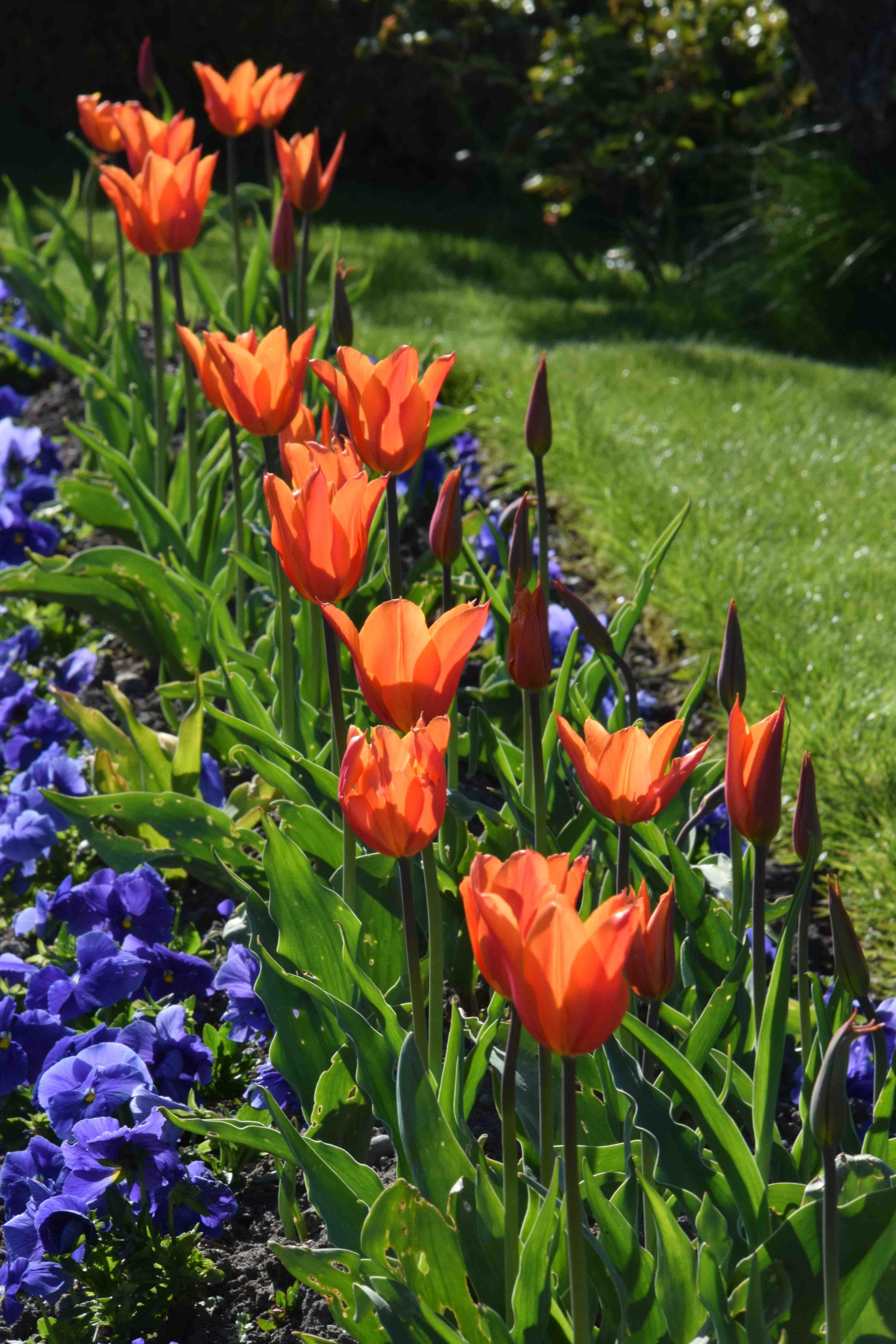
Look out for the new ‘Corona’ or ‘Crown‘ tulips such as ‘Red Dress’ which have strangely sculpted blooms.
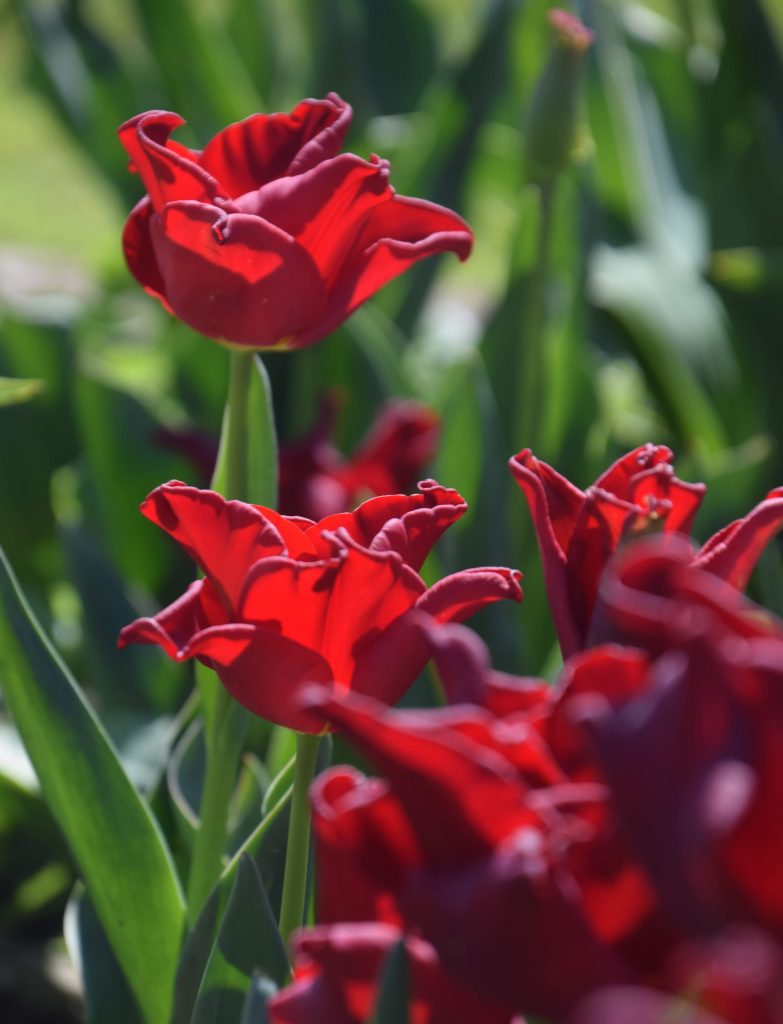
Double flowered tulips can bloom from late March to Late April and the later are often called Peony-flowered tulips. Their heavy blooms are prone to damage from heavy rain and wind so give them a sheltered spot.
There is no rush to plant tulips – you can leave it till November if you like. But the bulbs will be in short supply this year so don’t leave it too late to buy them. Tulips always look better when in decent clumps, of at least ten if you can afford it.
Buy named varieties and do not buy cheap mixtures. These may be small bulbs that will not bloom well. Bigger bulbs always produce bigger and better blooms. Mixes may also contain varieties that do not flower at the same time so you don’t get the effect on the pack. I would always avoid cheap bulbs in supermarkets and shops. Buy from a garden centre that stocks quality bulbs, like Nags Hall!
You should plant the bulbs about 10-15cm deep but planting depth is not too critical. Tall varieties should be planted deep just to keep the stems stable. When planting in window boxes you may only be able to plant the bulbs 8-10cm deep but that will be OK. In pots where you are planting layers of bulbs make tulips the first bulbs you plant, on the lowest level. The bulbs may be 15-20cm deep and that is fine too.
In beds and with bedding you may plant the bulbs 20-30cm apart but in pots, where you want a mass of colour, you can plant them as close as 8cm.
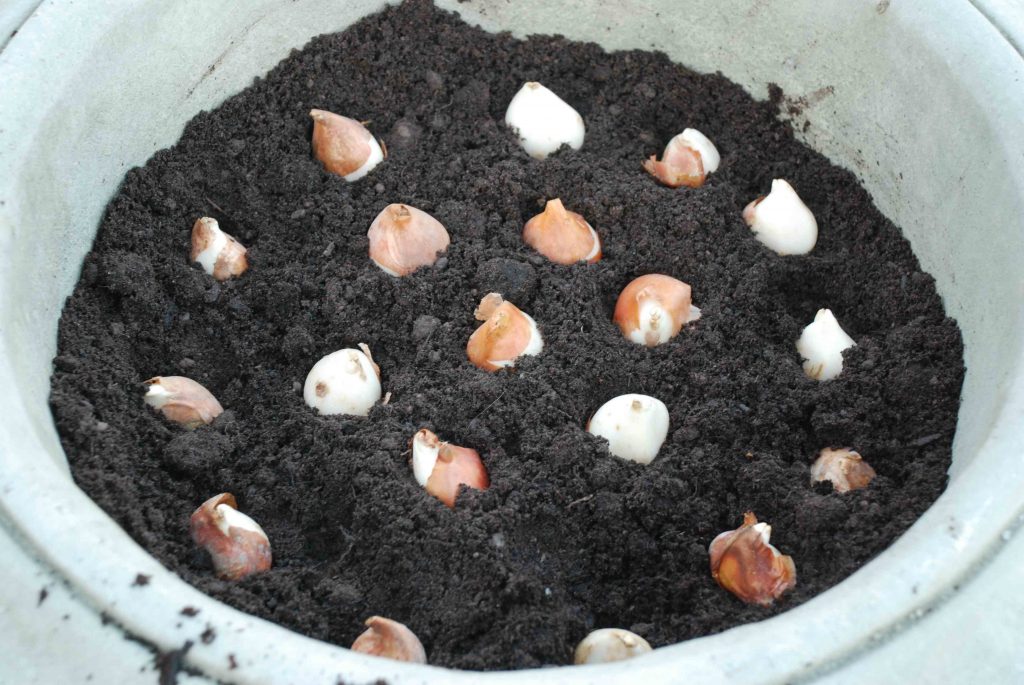
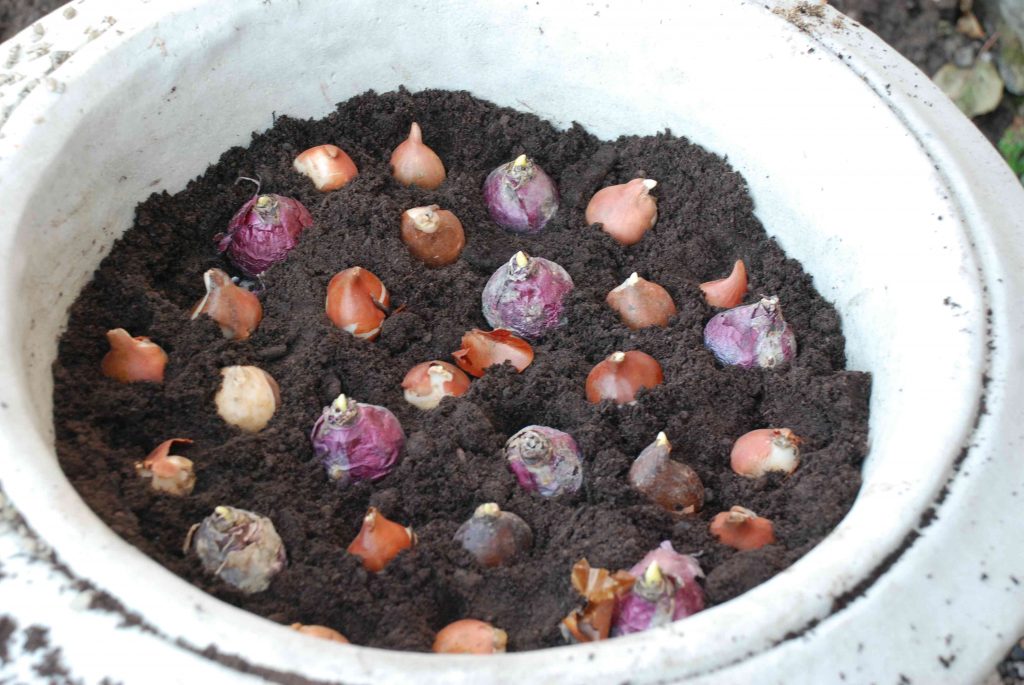
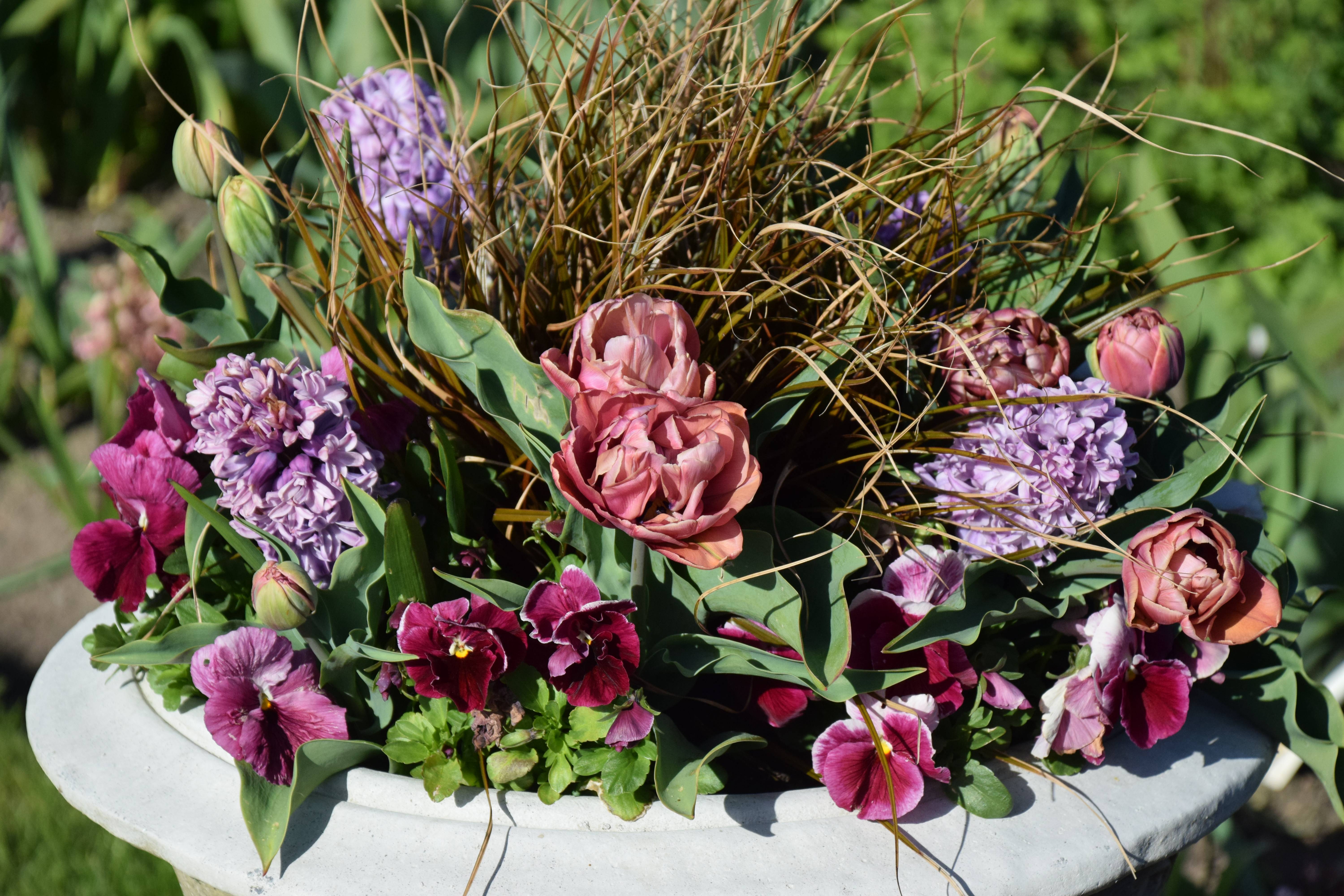
Next week: Make the most of hyacinths